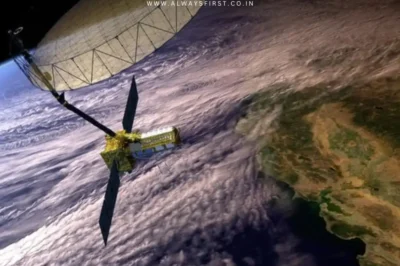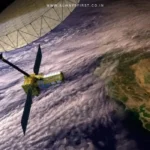Key Takeaways:
✔ Historic Collaboration: NASA and ISRO’s joint mission, NISAR, will launch on July 30 at 5:40 PM from Sriharikota.
✔ Advanced Earth Monitoring: Equipped with dual-frequency radar, it will scan the entire globe every 12 days with unmatched precision.
✔ Wide Applications: From tracking climate change to disaster management, NISAR will transform environmental and geological studies.
NASA-ISRO’s NISAR Satellite Launch: A New Era in Earth Observation
In a landmark collaboration between NASA and the Indian Space Research Organisation (ISRO), the NISAR (NASA-ISRO Synthetic Aperture Radar) satellite is all set for liftoff on July 30 at 5:40 PM IST from the Satish Dhawan Space Centre in Sriharikota. This highly anticipated mission marks a significant leap in global Earth observation capabilities.
Cutting-Edge Technology for Unprecedented Insights
The satellite will be carried into a Sun-synchronous orbit (743 km altitude) by ISRO’s GSLV-F16 rocket. What makes NISAR special is its dual-frequency radar system, combining NASA’s L-band and ISRO’s S-band for the first time. Using SweepSAR technology, it will capture high-resolution images with a 242 km swath, enabling all-weather, day-and-night monitoring of Earth’s surface.
Unlike traditional satellites, NISAR will scan the entire planet every 12 days, detecting minute changes—whether it’s ground deformation, melting ice sheets, or shifting vegetation. This data will be crucial for climate scientists, geologists, and disaster response teams.
Real-World Applications: From Climate Science to Disaster Management
NISAR’s capabilities extend far beyond research. Some of its key applications include:
- Climate Change Tracking: Monitoring ice sheet movements, sea ice classification, and soil moisture changes.
- Disaster Response: Enhancing earthquake, landslide, and flood predictions by detecting ground shifts in real time.
- Ecosystem & Water Monitoring: Mapping forest cover, wetlands, and surface water resources with unmatched accuracy.
A Decade in the Making
Weighing 2,392 kg, NISAR represents over 10 years of collaboration between NASA’s Jet Propulsion Laboratory (JPL) and ISRO. The satellite features a 12-meter-wide mesh reflector antenna, the largest of its kind, designed to deliver ultra-precise radar imaging.
As the countdown begins, scientists worldwide are eagerly awaiting the wealth of data NISAR will provide, potentially transforming our understanding of Earth’s dynamic systems.
Stay tuned to AlwaysFirst for live updates on this historic launch!






































Leave a Reply